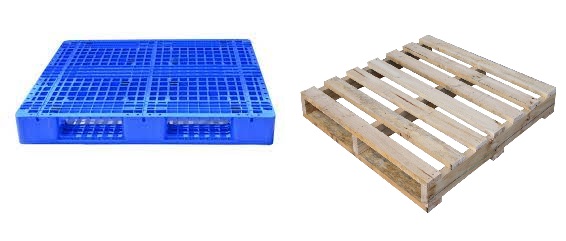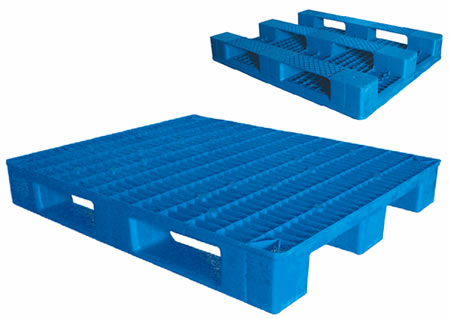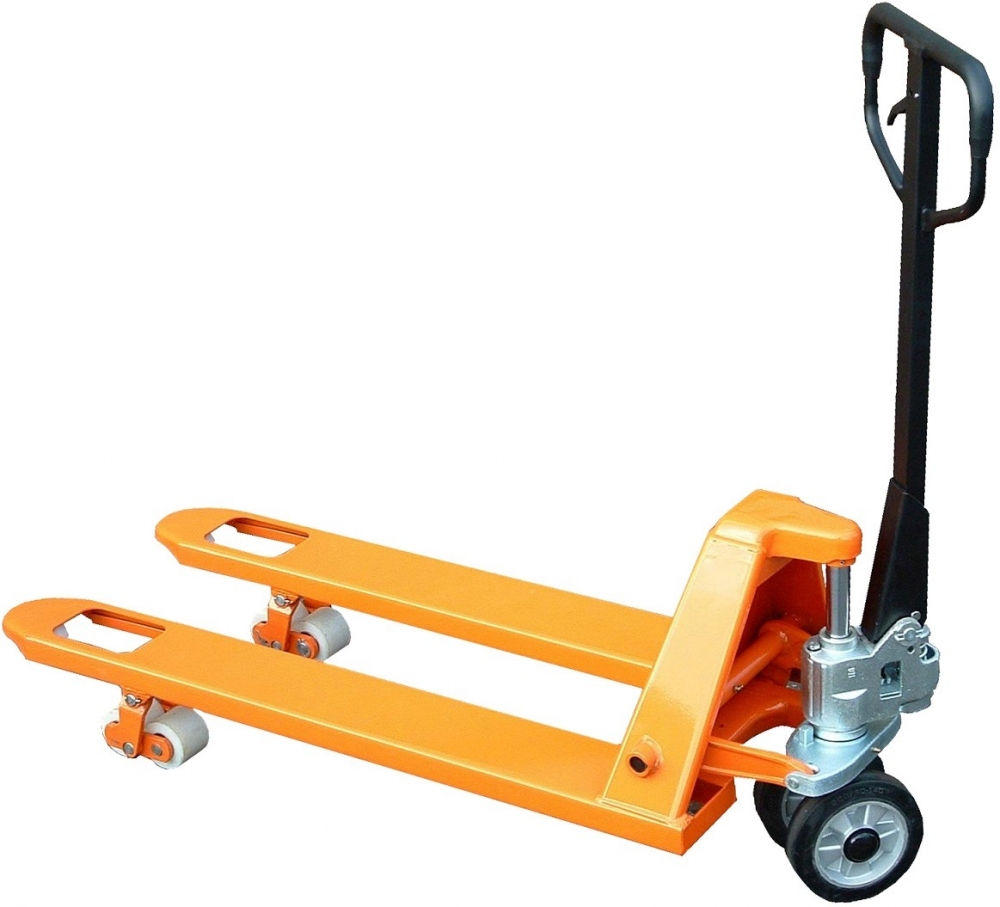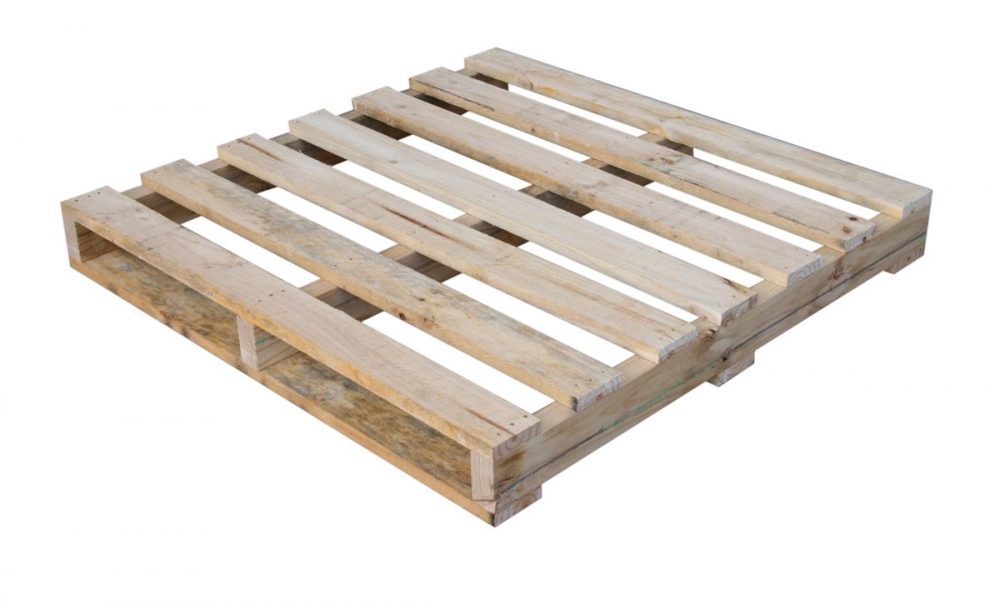Comparison between wooden pallet and plastic pallet
Comparison Between Wooden Pallet and Plastic Pallet
Plastic pallets and wooden pallets are the two most common types of load-bearing platforms used in transportation, storage, and logistics, each with their own advantages, disadvantages, and ideal applications. Choosing between them depends on factors such as cost, durability, hygiene requirements, environmental impact, and handling needs.
While both serve the same fundamental purpose—providing a stable base for stacking goods and allowing forklifts or pallet jacks to move loads efficiently—the differences in their materials, performance, and lifespan can significantly affect a company’s operations and overall supply chain efficiency.
Understanding the comparison between plastic pallets and wooden pallets is essential for businesses aiming to optimise their packaging and shipping solutions.
Wooden pallets have been the global standard for decades and are widely appreciated for their affordability and versatility. They are usually made from hardwoods like oak or softwoods like pine and can be easily manufactured, repaired, or customised.
One of the greatest strengths of wooden pallets is their low initial cost, making them an attractive choice for businesses that require large quantities of pallets, especially for one-way shipments where return and reuse are unlikely.
Wooden pallets also offer good load-bearing capacity, with many designs capable of supporting heavy and irregular loads. They can be customised to non-standard dimensions to suit specific products, making them versatile for different industries such as manufacturing, agriculture, and retail.
Furthermore, wooden pallets are easy to repair—damaged boards can be replaced individually without discarding the entire pallet, which can extend their service life and reduce waste.
However, wooden pallets are not without drawbacks. One of the main disadvantages is their susceptibility to moisture, pests, and bacteria. If not properly treated, wooden pallets can absorb water, which may lead to warping, rotting, or mold growth.
They are also vulnerable to insect infestation, which is why many countries require wood packaging materials to comply with the ISPM-15 standard, involving heat treatment or fumigation before international shipping.
Additionally, wooden pallets can splinter, crack, or break under certain conditions, which can pose safety hazards to workers handling them. Their surface is also rougher compared to plastic, which can damage delicate goods or packaging. In industries such as pharmaceuticals, food processing, or cleanroom manufacturing, where hygiene is critical, wooden pallets may not be suitable because they are harder to clean and sanitise.
Plastic pallets, on the other hand, are made from high-density polyethylene (HDPE), polypropylene (PP), or recycled plastics, and they have gained popularity in recent decades due to their durability, hygiene benefits, and consistent quality. Unlike wood, plastic pallets are resistant to moisture, chemicals, and most environmental conditions.
They do not splinter or have nails, reducing the risk of injury and product damage. Because they have a smooth, non-porous surface, they are much easier to clean and disinfect, making them ideal for industries with strict hygiene requirements such as pharmaceuticals, electronics, and food and beverage manufacturing. Plastic pallets are also unaffected by insects and do not require fumigation or heat treatment to meet international shipping regulations.
In terms of durability, plastic pallets generally have a longer lifespan than wooden pallets when used in closed-loop systems where pallets are returned and reused multiple times. While wooden pallets may last a few years under moderate use, plastic pallets can last up to 10 years or more, depending on handling conditions.
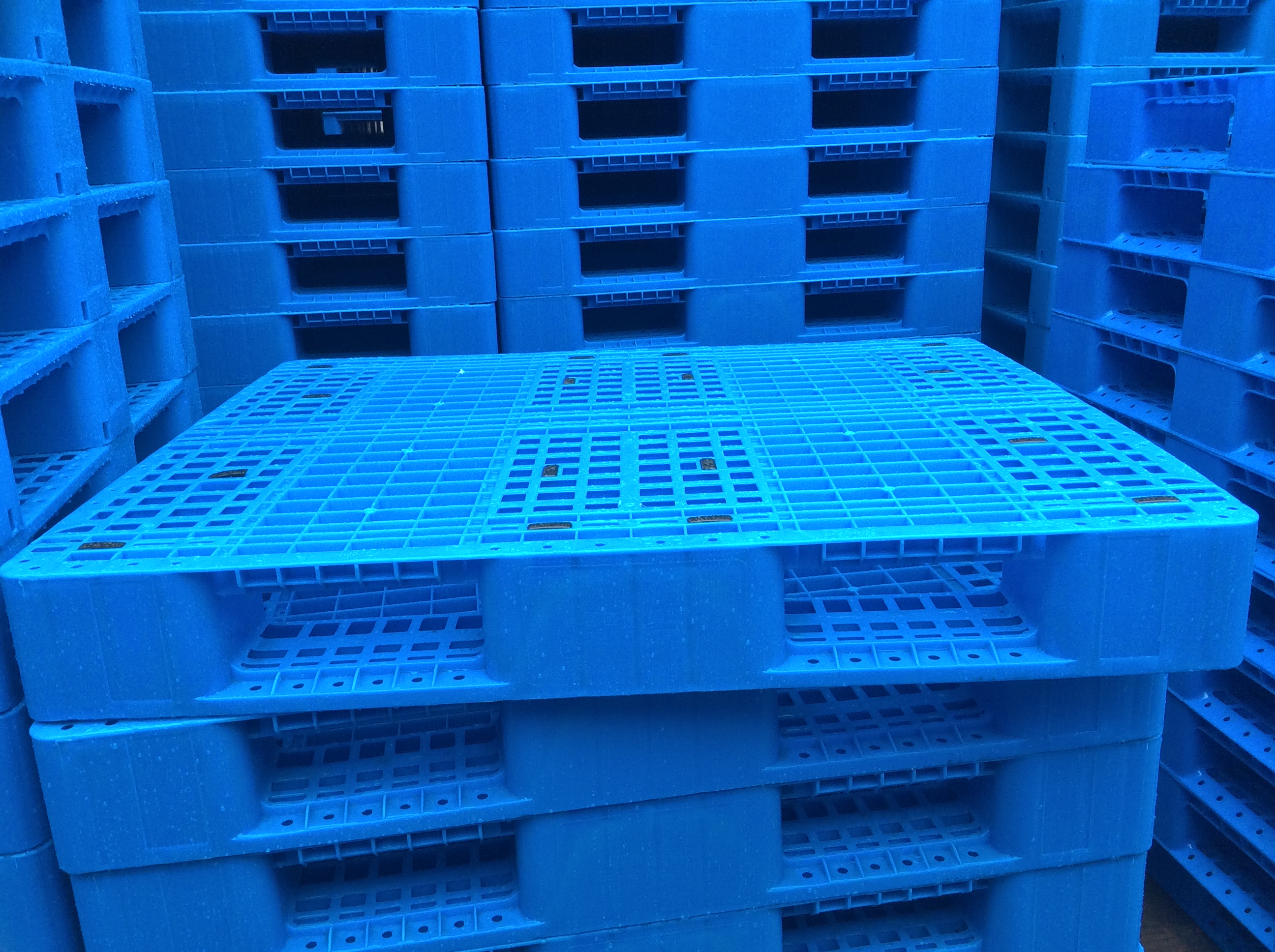
They are more resistant to impact, weather, and wear, meaning they maintain their structural integrity over a longer period. In addition, their consistent manufacturing quality ensures uniform size and shape, which is important for automated handling systems, conveyors, and high-bay storage racks where precision is required.
Despite these advantages, plastic pallets also have their downsides. The most obvious is their higher upfront cost, often two to five times more expensive than wooden pallets.
This makes them less attractive for one-way shipments or situations where pallets are unlikely to be returned. Repairing plastic pallets is also more challenging compared to wooden pallets; damaged sections often require specialised plastic welding or may not be repairable at all, leading to complete replacement.
Another consideration is load capacity—while many heavy-duty plastic pallets can match or exceed the strength of wooden pallets, low-cost or lightweight models may not be suitable for very heavy loads. Additionally, plastic pallets are less heat-resistant than wood, meaning they can deform under high temperatures if not made from special heat-tolerant materials.
From an environmental perspective, both types of pallets have sustainability considerations. Wooden pallets are made from renewable resources, and at the end of their life, they can be repaired, reused, or recycled into wood chips, mulch, or biofuel.
However, sourcing wood still involves cutting down trees, and untreated wooden pallets may end up in landfills if not recycled. Plastic pallets, while made from non-renewable materials, can be manufactured from recycled plastics and are themselves fully recyclable at the end of their lifespan.
Their longer service life in closed-loop systems can reduce the need for constant replacements, thereby lowering the overall environmental footprint over time. However, if plastic pallets are used in one-way shipments and not recovered, their environmental advantage is reduced because they may contribute to plastic waste.
When it comes to weight, plastic pallets generally have an advantage over wooden pallets. Plastic pallets can be lighter, which reduces shipping costs, especially for air freight where weight is a critical factor.
However, not all plastic pallets are lighter—heavy-duty models can be as heavy or heavier than wood. Wooden pallets, while often heavier, provide excellent stability for stacking, which is valuable for certain storage applications. The weight difference also affects manual handling; lighter pallets are easier and safer for workers to move, reducing strain and potential injuries.
The choice between plastic and wooden pallets often comes down to the specific requirements of the business. For example, industries that require high hygiene, precise dimensions, and long-term reuse may prefer plastic pallets despite the higher initial investment.
On the other hand, businesses that ship goods overseas once and do not expect to retrieve the pallets often choose wooden pallets due to their low cost and ease of disposal or recycling at the destination. In some cases, companies use a combination of both types—wooden pallets for one-way or heavy-duty bulk shipments, and plastic pallets for internal use or high-value shipments requiring cleanliness and consistency.
Another factor influencing the decision is regulatory compliance. For international shipments, wooden pallets must meet ISPM-15 requirements, which adds time and cost for heat treatment or fumigation.
Plastic pallets bypass this requirement entirely, which can simplify logistics for exporters. In automated warehouses or robotic picking systems, the uniformity of plastic pallets is a significant advantage because it reduces the risk of machine jams or handling errors. For manual warehouses or industries with less stringent handling needs, wooden pallets remain more than sufficient.
Cost analysis over the long term also plays a major role. While plastic pallets have a higher initial price, their extended lifespan and lower maintenance needs can make them more cost-effective over several years, especially if they are part of a returnable pallet pool.
Wooden pallets, while cheaper at first, may require more frequent repairs or replacements, which can add to operational costs over time. Many companies perform a total cost of ownership calculation to determine which option is more economical for their specific logistics cycle.
In summary, plastic pallets and wooden pallets each have their own strengths and weaknesses, making them suitable for different applications within the supply chain. Wooden pallets excel in affordability, customisability, and load-bearing strength, making them ideal for one-way shipments and heavy goods.
Plastic pallets offer superior hygiene, durability, and uniformity, making them the preferred choice for closed-loop systems, automated handling, and industries with strict cleanliness standards.
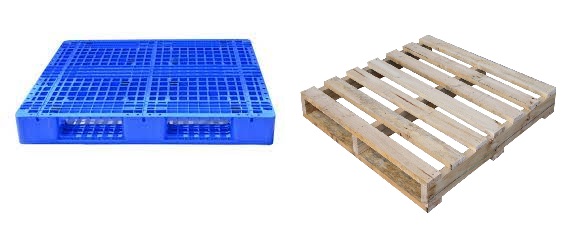
The decision is rarely about which type is universally better—it is about selecting the right pallet type for the job based on factors like cost, handling conditions, regulatory compliance, environmental impact, and intended lifespan. As technology and sustainability practices continue to evolve, both wooden and plastic pallets will remain integral to global logistics, with each playing its role in moving goods safely, efficiently, and cost-effectively.


